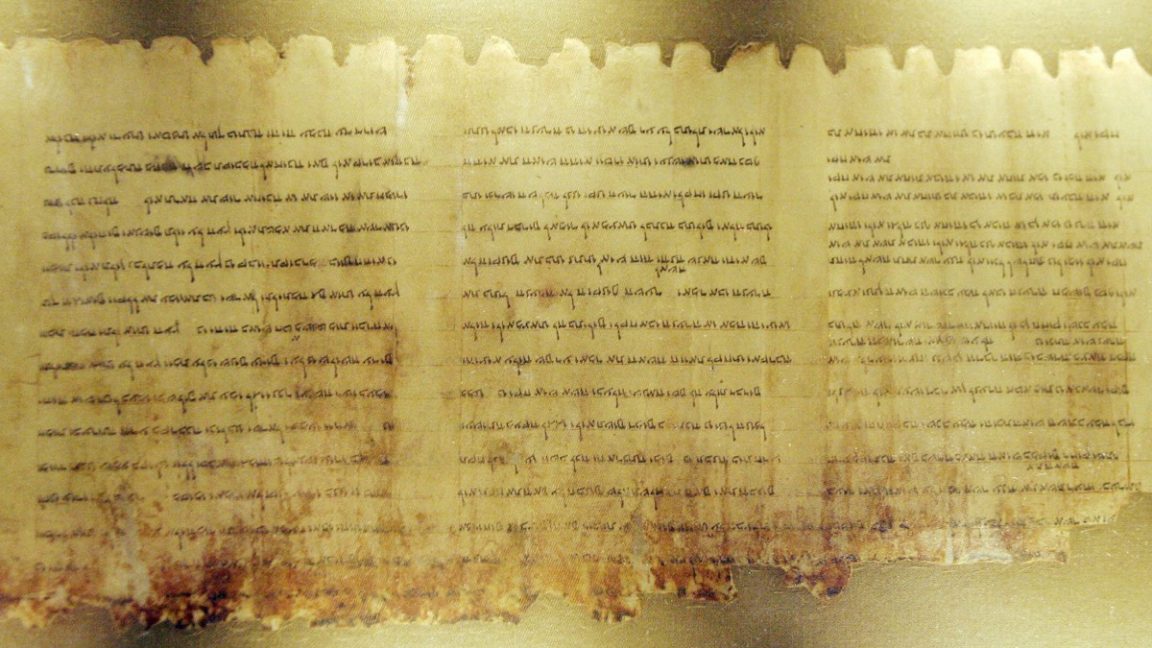Over the years, scholars of the Dead Sea Scrolls have analyzed the ancient parchments with various methods: for example, X-rays, multispectral imaging,"virtual unfolding," and paleography, i.e., studying elements in their writing styles. The scrolls are believed to date back to between the third century BCE and the first century CE, but those dates rely largely on paleography, since only a handful of the scrolls have calendar dates written on them.
多年来,《死海学者》的学者通过各种方法分析了古老的羊皮纸:例如,X射线,多光谱成像,“虚拟展开”和古征,即在其写作风格中研究元素。据信,卷轴可以追溯到公元前三世纪和公元一世纪之间,但是这些日期主要依赖古编目,因为只有少数卷轴上有日历日期。
However, the traditional paleographic method is inherently subjective and based on a given scholar's experience. A team of scientists has combined radiocarbon dating from 24 scroll samples and machine-learning-based handwriting analysis to create their own AI program—dubbed Enoch. The objective was to achieve more accurate date estimates, according to a new paper published in the journal PLoS ONE. Among the findings: Many of the scrolls are older than previously thought.
但是,传统的古学方法本质上是主观的,并且基于给定的学者的经验。一个科学家团队将24个滚动样本和基于机器学习的手写分析的放射性碳结合起来,以创建自己的AI程序 - 调用Enoch。根据《 PLOS One》杂志上发表的一篇新论文,目的是实现更准确的日期估计。其中的发现:许多卷轴比以前想象的要老。
As reported earlier, these ancient Hebrew texts—roughly 900 full and partial scrolls in all, stored in clay jars—were first discovered scattered in various caves near what was once the settlement of Qumran, just north of the Dead Sea, by Bedouin shepherds in 1946–1947. (Apparently, a shepherd threw a rock while searching for a lost member of his flock and accidentally shattered one of the clay jars, leading to the discovery.) Qumran was destroyed by the Romans, circa 73 CE, and historians believe the scrolls were hidden in the caves by a sect called the Essenes to protect them from being destroyed. The natural limestone and conditions within the caves helped preserve the scrolls for millennia.
如前所述,这些古老的希伯来文本(总共有900张全部和部分卷轴,储存在粘土罐中),首先被发现在1946 - 1947年的Bedouin Shepherds曾经是死海北部的Qumran曾经曾经是Qumran的各个洞穴中。(显然,一个牧羊人在寻找羊群失落的成员时扔了一块岩石,不小心打碎了其中一个粘土罐,导致了发现。洞穴内的天然石灰石和条件有助于保存千年的卷轴。
This isn't the first time that AI tools have been applied to analyzing the handwriting on the Dead Sea Scrolls. Back in 2020, we reported on an AI-aided handwriting analysis of the Great Isaiah Scroll. Most scholars believed that the Isaiah Scroll was copied by a single scribe due to the seemingly uniform handwriting style. But others have suggested that it may be the work of two scribes writing in a similar style, each copying one of the scroll's two distinct halves. The 2020 analysis revealed that the text was indeed likely written by two scribes. It also showed that the second scribe's handwriting was more variable than the first's, although the two styles were quite similar, indicating a possible common training.
这不是第一次应用AI工具来分析死海卷轴上的笔迹。早在2020年,我们就伟大的Isaiah卷轴进行了AI辅助手写分析。大多数学者认为,由于看似统一的手写风格,以赛亚书卷轴被单个抄写员复制。但是其他人建议这可能是两个抄写员以类似风格写作的作品,每个抄写都复制了卷轴的两个不同的半部分。2020年的分析表明,本文确实很可能是由两个抄写员撰写的。这也表明,第二笔抄写员的笔迹比第一抄写更可变,尽管两种样式非常相似,这表明可能是常见的培训。

